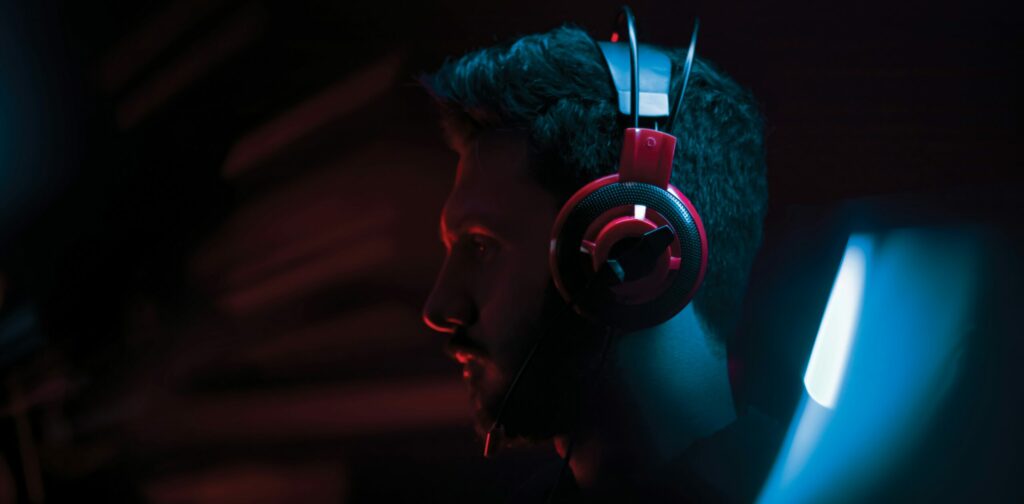Like with all audio equipment, picking out a pair of studio headphones is like pulling a needle from a haystack. The market is flooded with options, drastically varying in price, and the technical terminology doesn’t make it any easier. At least they all tend to use the same type of cable. But fear not, as I have some answers for you! Let’s narrow down your choices and ensure you get the perfect pair of studio headphones to suit your needs.
Closed Back vs. Open Back
Possibly one of the most common questions I am asked when it comes to headphones is, «What’s the difference between closed back and open back?» In essence, the difference is relatively simple. Closed-back headphones have cups that are completely covered, while each cup on open-back headphones allows sound to dissipate through their backside. Makes perfect sense, right? So why would this be something that headphone manufacturers would even bother with? The basic reasoning is a combination of sound spill and sound pressure.

Let’s say we’re recording vocals over a backing track. To achieve a clean recording that we have a great degree of control over in the editing stage, we need to minimize bleed as much as possible. For this reason, we would use closed-back headphones. They’ll keep our backing track in the singer’s ears and out of our microphone. For a great example of some classic closed-back studio headphones, check out the Beyerdynamic DT100.
Now, as another example, let’s think about the mix engineer toiling away late at night in the studio. If this is you and you’re often mixing away without breaks for hours on end, the last thing you’re going to want to do is give yourself ear fatigue. Utilizing open-back headphones will allow the sound waves to travel into your ear as well as out of the headphones, creating less build-up of air pressure. Not only this, but high-quality open-back headphones tend to offer a greater sense of clarity within a mix. This does depend on the source material, but it is usually the case. Some of the best open-back headphones on the market are the Beyerdynamic DT990s.
In, On, and Over Ear
The likelihood is that if you are looking to buy studio headphones, you’re probably not considering the in-ear approach. In-ear headphones tend to offer a very underwhelming representation of the low end. Quite often, they even struggle to reproduce the entire frequency spectrum altogether. Equally, the nature of their positioning means that sound is directly injected into the ear, making it tricky for the brain to translate acoustics or differentiate between early and late reflections. However, having a pair of decent in-ear headphones can be incredibly helpful for briefly checking the balance of a mix. They also offer very good noise rejection, so if you’re in a pinch and trying to get some work done on the go, they could be a lifesaver.
On-ear headphones are probably closer to what you’re considering. The nature of this design tends to offer an open and airy sound. This is simply because, unlike wireless in-ear systems or over-ear headphones, they don’t completely close you off from your environment. Sometimes, on-ear headphones can be a good compromise when you can’t afford open-back studio headphones. In general, their design is what limits the sound quality. Many can offer very high-quality, full-frequency audio. However, the better the performance, the more you’ll have to pay.
Finally, over-ear headphones are probably the most common studio headphones you’ll find. They typically offer a more comfortable fit with the best level of external noise cancellation. Larger drivers mean a better representation of the low end and the bigger design allows for greater control over frequency response. Whether you’re looking for closed-back recording headphones or open back mixing headphones, you’re probably going to lean towards an over-ear design for the best quality. Prices are going to range from as little as $50 up to $1000s for superior quality.
Studio Headphones vs. Studio Monitors
Now, I appreciate that many of you may not have the space or budget for studio monitors. Equally, plenty of you may be used to and very comfortable mixing on headphones. That being said, you are not going to achieve the best possible mix using headphones as your primary listening source. Studio headphones are fantastic (not to mention very important) as a way to check the balance of your mixes while you work. Much of your audience is likely to listen on headphones. Due to the psychoacoustic nature of headphones, you will want to ensure your music sounds good on them as well. Even mastering engineers will use headphones for reference, but they will always finalize the work using studio monitors.

TL;DR
There are many different types of headphones to choose from. In-ears are small and portable but generally won’t provide the quality needed in the studio. On-ear headphones sound open and airy but won’t give you much noise cancellation. Over-ear studio headphones are likely to be the best bet for most of you, as they offer superior quality in terms of frequency response and sound reproduction. Open-back headphones are fantastic for both studio and live mixing and mastering, as they create less stress on the ears and provide a generally clearer sound. Closed-back headphones are the best choice if you’re looking to do a lot of recording. Apply this knowledge to your own situation and make the right choice when buying headphones.
Sobre el autor

Tim Dunphy
Ingeniero de sonido y redactor de contenidos especializadosMás de 10 años de experiencia trabajando en el sector del audio. De todo, desde enrollar XLR hasta masterizar álbumes. Soy un hombre hecho a sí mismo y mantengo mis activos en Bitcoin. ¿Qué más hay que saber?
Deja un comentario
Inicia sesión para comentar


